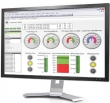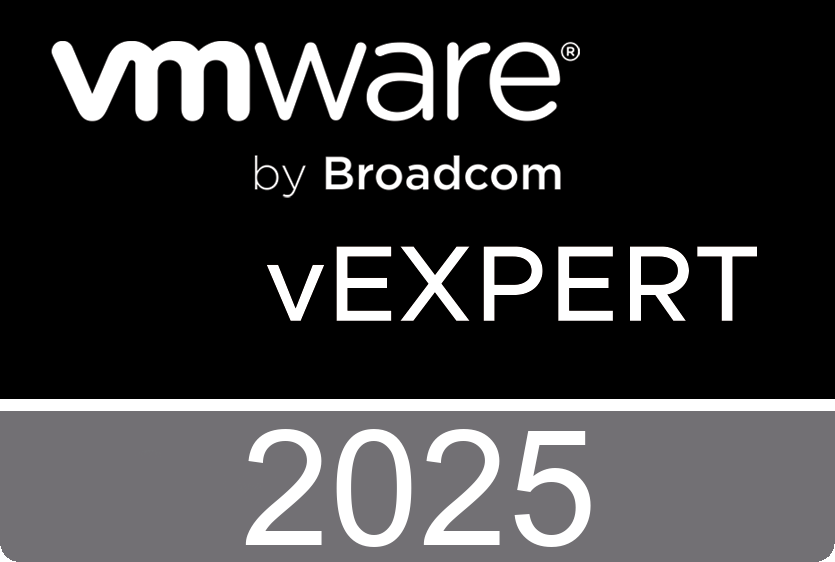Saturday, March 27. 2010
PowerCLI Baseline-Compliancy Check
1) One file with all hosts and their compliancy state
2) One file with all attached baselines found
3) One file for every attached baseline found with its content
You can get you copy of Harold’s script here: Baseline-Compliancy.ps1 If you have any questions or suggestions for improvements just send your Tweets to @Hharold.
Thursday, March 25. 2010
Storage Protocol Choices & Storage Best Practices for vSphere
I've stumbled upon a great presentation created by Nicholas Travers who works as a VMware Technology Consultant at EMC. The presentation is called "Storage Protocol Choices & Storage Best Practices for VMware ESX" and deals with storage considerations like:
 How many VMs per LUN?
How many VMs per LUN?- Standard LUN Size?
- NFS, RDM or VMFS?
- iSCSI, or FC?
- How do I scale iSCSI and NFS?
- Queue Depths?
- I need a 3TB LUN... How?
- Why do I need multi-pathing?
- I need SRM support... How?
The presentation can be downloaded from: Storage Protocol Choices & Storage Best Practices for VMware ESX
Continue reading "Storage Protocol Choices & Storage Best..." »Tuesday, March 23. 2010
Administering VMware Site Recovery Manager 4.0
Mike Laverick has released his newest book “Administering VMware Site Recovery Manager 4.0” and you don’t have to pay for it, well it would be a great if you donate at least 10$ to Unisef.
 This book will teach you how to install and configure VMware’s Site Recovery Manager product. It also covers in detail the failover and failback processes and Mike will guide you step-by-step through the setup of the product. This book in not filled with project management padding that typifies a lot of IT books. It’s practical and technical, and assumes you are already pretty familiar with VMware vSphere4. In This book you will learn the strengths and weaknesses of Site recovery Manager, and Mike will show you the common pitfalls and errors that can happen, and also more importantly why they happen, and how to fix them.
This book will teach you how to install and configure VMware’s Site Recovery Manager product. It also covers in detail the failover and failback processes and Mike will guide you step-by-step through the setup of the product. This book in not filled with project management padding that typifies a lot of IT books. It’s practical and technical, and assumes you are already pretty familiar with VMware vSphere4. In This book you will learn the strengths and weaknesses of Site recovery Manager, and Mike will show you the common pitfalls and errors that can happen, and also more importantly why they happen, and how to fix them.
Monday, March 22. 2010
How to access PowerCLI trough SSH
There are a lot of automation tools available which are able to deploy and configure an ESX host but if you want to use PowerCLI for the finishing configuration part there was always a manual step involved. I’ve found a way to start a PowerShell script from the service console trough SSH. The only thing you have to do is install WinSSHD on one of your Windows servers, just execute the distributable that you downloaded from the Bitvise website and follow the process. As soon as the installer completes, you will have a working WinSSHD installation on your machine. No changes to the default configuration are necessary; you only need to start it. However, you might want restrict your users' access to those features that they actually need, which will improve security. If you are new to WinSSHD, it’s highly recommended that you first make sure that you can establish a working SSH connection before you change any settings on the server. If you cannot connect to WinSSHD using its default configuration, this is most likely due to a network or firewall problem that you will need to resolve before you are able to connect. In its default configuration, WinSSHD accepts connections on the well-known port number for SSH servers, 22.
I’ve recorded a Jing video (with audio) which demos the CPU-Ready PowerCLI script running on my vCenter server launched from one of my ESX host’s service console.
Sunday, March 21. 2010
Data Mining the vCenter Database with QlikView
 Several months ago one of my students (Jan-Peter Klijn) showed me a real nifty application called QlikView, it’s a program that makes it possible to retrieve and assimilate data from different sources. Once loaded into the program, the data is presented in a way that is easy to understand and work with. To make selections in QlikView, you don’t need any previous knowledge of databases or search routines: you simply click on the item of which you want to know more. The clicked item turns green, and the program immediately presents all the items associated with the selected one. Graphics and tables can be created to get an even better overview of data. Any graphic or table can be printed or exported to other programs.
Several months ago one of my students (Jan-Peter Klijn) showed me a real nifty application called QlikView, it’s a program that makes it possible to retrieve and assimilate data from different sources. Once loaded into the program, the data is presented in a way that is easy to understand and work with. To make selections in QlikView, you don’t need any previous knowledge of databases or search routines: you simply click on the item of which you want to know more. The clicked item turns green, and the program immediately presents all the items associated with the selected one. Graphics and tables can be created to get an even better overview of data. Any graphic or table can be printed or exported to other programs.
I’ve managed to connect QlikView with the vCenter database and within minutes, I was able to create some great “Real Time” reports. I’ve created a Jing movie which demos the configuration and report creation. QlikView is free for personal use, you can get it here.
Continue reading "Data Mining the vCenter Database with QlikView" »Saturday, March 20. 2010
Enabling CDP on a vSwitch? What will the Cisco admin see...
It’s possible to configure the ESX host's virtual switches so the Cisco Discovery Protocol on a standard or distributed switch is issuing broadcasts containing some of your ESX host's information. After enabling the CDP on your ESX server, the Cisco administrator is able to listen for information broadcasted by your ESX host but what can he actually see? To find out I’ve installed the Tallsoft’s Cisco CDP Monitor on my vCenter server.
With Cisco CDP Monitor, you can display the information of the connecting Cisco devices, such as device names, device models, connecting port , administrative ip address, IOS version, VTP Domain Name, and so on. With this information, one could easily learn the total topology of the complete network and do troubleshooting. Once the Cisco Discovery Protocol information changes (such as the link or device failed, or the setup of Cisco device changed), Cisco CDP Monitor will detect it and will display the related info. It also shows information broadcasted by you ESX servers.
Virtual switches can be configured for four different CDP modes of operation:
Down – CDP information is neither sent nor received
Listen – CDP information is received from the physical switches
Advertise – CDP information is sent to the physical switches
Both – CDP information is sent to and received from the physical switches
For enabling CDP on standard switches you have to use command-line interface. CDP can be enabled on distributed switches using the vSphere Client. Here’s the info I was able to retrieve from an ESX host after running “esxcfg-vswitch -B both vSwitch0” in the service console.
Neigbour1:
device id: esx4-l.ntpro.local
ipaddress: 0.0.0.0
port: vmnic0 ![]()
capabilities: Switch
ios_version: Releasebuild-208167
platform: VMware ESX
prefix:
vtp_domain:
native_vlan:
duplex: full
Thursday, March 18. 2010
Dead and Gone - Now I'm Virtualized
This is a song by Varrowinc told in first person from the perspective of a physical server that has been virtualized by vSphere. This was done on an iPhone with I am T-pain App.
Wednesday, March 17. 2010
What’s new in VMware ThinApp 4.5?
VMware ThinApp delivers the following new capabilities:
Windows 7 support – This expanded platform support allows for applications of older Windows OS’s to be packaged and deployed on Windows 7 allowing for greater compatibility support of legacy applications.
Relink – Applications packaged using previous versions of ThinApp can be updated to the new ThinApp 4.5 format without the need of associated project files for application. This command line utility helps to speed upgrade process of existing ThinApp packages.
Performance Accelerator – Reduced page file usage for virtual applications and increased memory sharing between multiple instances of applications allows for quicker application invocation and improved application delivery to end users. This helps to improve user experience, at the same time reduces network bandwidth consumption.
Registry Transaction Protection - Ensure registry file integrity and eliminate potential data corruption due to crash or system failure.
ThinApp SDK - Published APIs to allow for integration of ThinApp with third party software.
ThinApp Community Portal - Users can upload application instructions and share with the community.
Enhanced Supportability - Customers have option to share packaging results with VMware for better support…
http://www.vmware.com/products/thinapp/
VMware will also offer a one day ThinApp training course in the near future, this course will equip applications-oriented administrators with the knowledge and skills to virtualize Windows applications with VMware ThinApp, modify the package.ini parameters to handle special circumstances, and choose the best deployment and updating processes for their environment.
Tuesday, March 16. 2010
VMware VCP Plus
 VMware will shortly announce advanced Certification to follow on from VCP. There will be new Enterprise and Design level Certifications. I cannot disclose the names of the new Certification tracks but look out for external, communication from VMware this month. I can tell you I would be very proud to hold one of these titles.
VMware will shortly announce advanced Certification to follow on from VCP. There will be new Enterprise and Design level Certifications. I cannot disclose the names of the new Certification tracks but look out for external, communication from VMware this month. I can tell you I would be very proud to hold one of these titles.
Sunday, March 14. 2010
VMware Workstation 7.1 Beta - Available for download
Arne Fokkema over at ict-freak.nl just tweeted about the availability of Workstation 7.1 beta. You can get your copy here: http://communities.vmware.com/community/beta/ws?view=overview
The VMware Workstation 7.1 Beta includes several new features and hundreds of minor improvements. Some release highlights include:
•OpenGL 2.1 support for Windows 7 and Vista guests: The addition of hardware accelerated OpenGL 2.1 support to the WDDM driver enables many more graphics applications to run inside of your virtual machines.
•Improved graphics performance: Significant enhancements have been made to the VMware WDDM driver that have produced benchmark results that are up to 80% faster. The updated driver also produces smoother video playback and addresses many reported rendering issues. Of course games run better as well!
•8-way SMP support plus virtual disks up to 2TB in size: The virtual hardware continues to become more powerful to meet the needs of Workstation customers who are running server class applications.
•OVF 1.0 support: Including the OVF Tool with this release enables users to easily import or export virtual machines and vApps and move them to vSphere or up into the cloud.•Direct Launch: Blur the distinction between running native and virtual applications by launching an application installed in a virtual machine directly from the start menu or taskbar of the host system.
•Automatic software updates: These VMware applications can now detect when a new version is released and are able to update at the click of a button.
•Fedora 12 virtual machines: We are excited about finally offering support for running one of the most popular Linux distributions on the planet!




